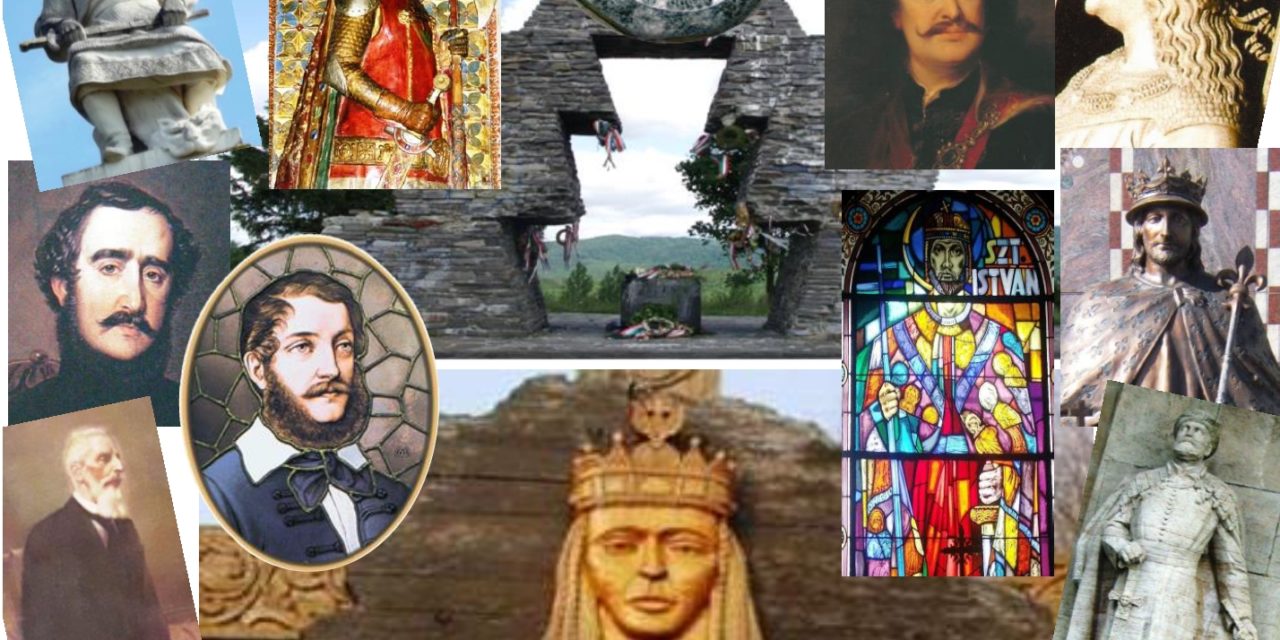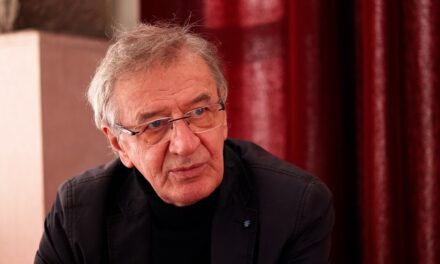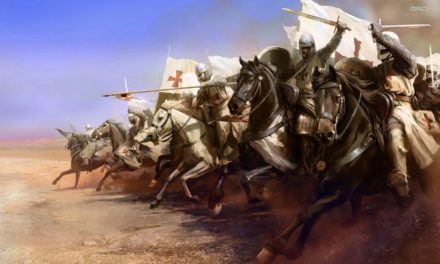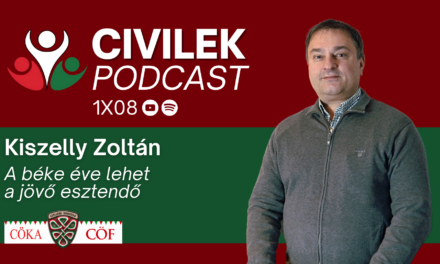Motto: "A nation that does not know its past does not understand its present, and cannot create its future!"
- part
Tuning information
In the coming weeks, I would like to publish the articles dealing with Hungarian history, which I hope will be published in a series under the title Five minutes of history for young people and everyone interested.
I am turning to You with the request that, if you have time, pass it on to your friends and acquaintances. Of course, only if you consider the topics suitable for it. The undisclosed purpose of the series is to present the positive side of our thousand and one hundred years of history. (For the sake of completeness, we should look back to the Scythian, Hun, and Avar roots, but that would lead very far. I plan to discuss this later, in a separate series.) We have to get here, because in the last seventy or one hundred and fifty years, the foreign we could encounter a negative, self-defeating view of history imposed on us by the powers that be.
After all, the very fact that after so many trials and attacks - unfortunately, every Hungarian can experience this even today - is already a miracle that Hungary still exists at all. There is a big gap in the broad layers of our society, especially in terms of historical knowledge of the younger generations. It is already clear from the title, I am presenting a slice of our history to the youth and all those who are interested, with the hope that maybe they will take five or ten minutes to read it. The short texts are complemented by rich visual material, which facilitates a better understanding of the topic. The chronological order is occasionally broken by a thematic chapter that spans a thousand years of our history. Examples include the history of the creation of Heroes' Square, a brief description of the thousand-year-old history of Hungarian-Polish relations, or the presentation of the portrait gallery of Hungarian saints.
The internet, YouTube and many other sources are pouring out articles, interviews, studies and books on historical topics. However, some of these - despite the fact that they seem likable, innovative, believable and have a high viewership and readership - are based on assumptions. Most of these creations are created with good intentions, but they are partly the product of fantasy, but they contain little factual material. Recently, a concept has dawned on me. Celebrities from history appeared. Who am I thinking of? They have a university degree, but despite their young age, they are at home in everything from French to Slavic and Turkish to Persian. Oriental musicians, horse archers and weapon makers, archaeologists and linguists, Turkologists and Finno-jumpers all in one. But they would not utter the names of Gyula László, Kornél Bakay or Lajos Kassai, since they are the "other side". According to them, the Hungarian Research Institute, founded in 2019, only takes money away from investigating the true cases, but the work of the Habsburg Historical Institute, which has been operating since 2003 (a member of the Central and Eastern European TTK Public Foundation since 2010), is fine. These historians are dangerous because in words, in terms of their field of research, they are working to uncover Hungarian history that has been neglected until now, but in the undercurrent they are actually undermining it.
Those interested in history are familiar with the upcoming topics, for them I can't say much new. But unfortunately, there are many people who are far from informed about the most elementary periods of our history, about the roles and actions of famous historical figures. I am not thinking only of the youth. Rather, it is for Hungarians who are struggling with the difficulties of making a living, with illness, or who have moved from the separated parts of the country to the motherland. The latter, for example, did not have the opportunity to learn Hungarian history, literature, or geography in elementary school - in Felvidék, Transcarpathia, Transylvania, Southern Region, Őrvidék. You would be lucky to find them too with the short writings.
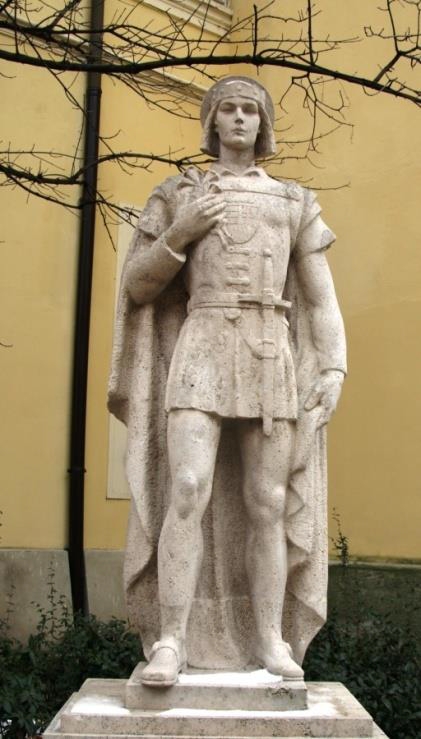
The statue of Saint Imre in Fehérvár, where, according to tradition, his birth house stood
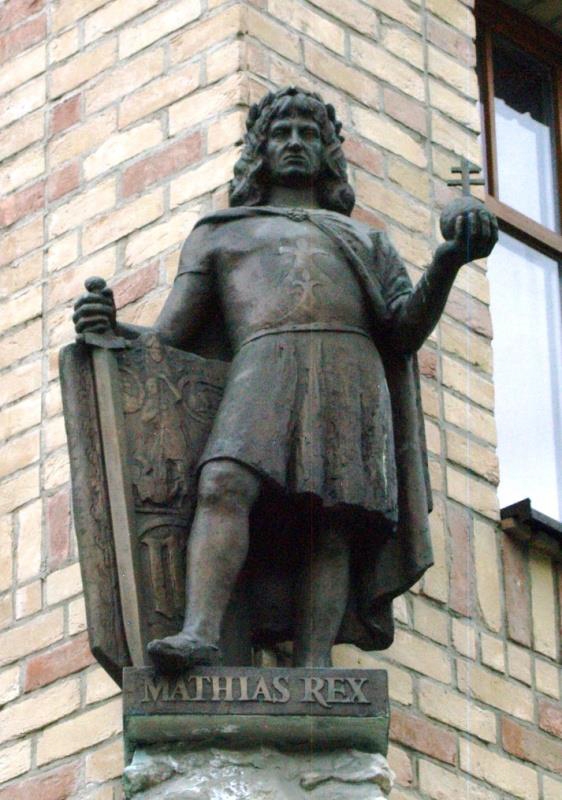
Statue of King Matthias in Révkomárom (Slovakia) in the Europa Yard

The statue of Miklós Zrínyi in Szigetvár, made famous by his great-grandfather's heroism.
The following arrangements only partially follow the old theme.
(For example, by no means that there was only one conquest, the invented Finno-Ugric origin, the demeaning tale of robber "adventures", or the conquering Hungarians who were set up as pagans.) Our history should not emphasize defeats, the lie of meat softened under the saddle, or the oppression of the poor Slavs be built. For decades, the self-destructive attitude of "dare to be small" was instilled in us, which is exactly the opposite of the outstanding role of our nation and the multitude of our talented people. We are skeptical about the deaths of Szent Imre (1031), King Mátyás (1458), Miklós Zrínyi (1664), István Széchenyi (1861), and Pál Teleki (1941) presented as hunting accidents or suicides.
Furthermore, let's finally get rid of the role of the "last henchman" created in the 20th century, based on lies, and the stamp of the Horthy fascist era that is still burning on us. One fact is worth thinking about in the case of each of the historical figures highlighted by the statues. Could it be so much a "coincidence" that they died - in the prime of their lives - when they would have played a key role in improving the fate of Hungary? The list could be continued with dozens of other examples, but it would exceed the scope of an entire book. Let's see the positive side of this too! They gave their lives, but there were always those who continued to build the nation.
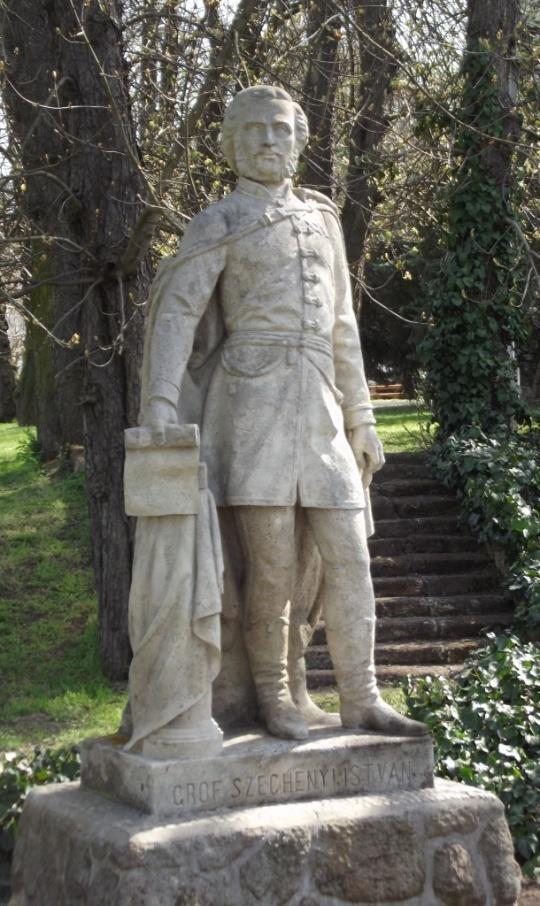
The statue of István Széchenyi in Budapest, in the Kamaraerdő
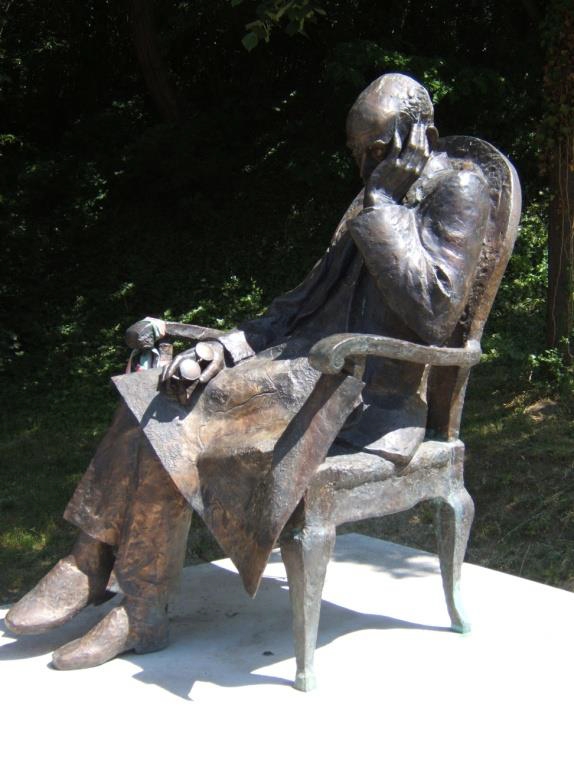
The statue of Pál Teleki in Balatonboglár, which could not be erected in Budapest
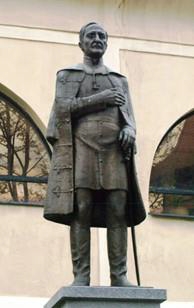
The statue of János Esterházy in Révkomárom, in the Európa Udvar
The selected examples therefore represent the tip of the iceberg. Tragic elements also appear in Hungarian history. After all, the four centuries leading from Mohács to Trianon are about nothing more than our people's struggle for self-defense, as well as the defense of Europe. A part of the Hungarian nobility, as well as peasants and craftsmen who were attached to their land, family, priest, and village, never bowed their heads to rabiga. This is what the Zrínyis' stand against the global powers /Ottoman Empire, Habsburg Empire/, the victorious Bocska war of independence, the lord's conspiracy against Vienna, the Rákóczi war of independence, the two-faced "friendship of Hungarians" of Mária Theresa, who was then followed by a succession of openly Hungarian-hating emperors, are all about this. After that, the Hungarian reform period naturally followed.
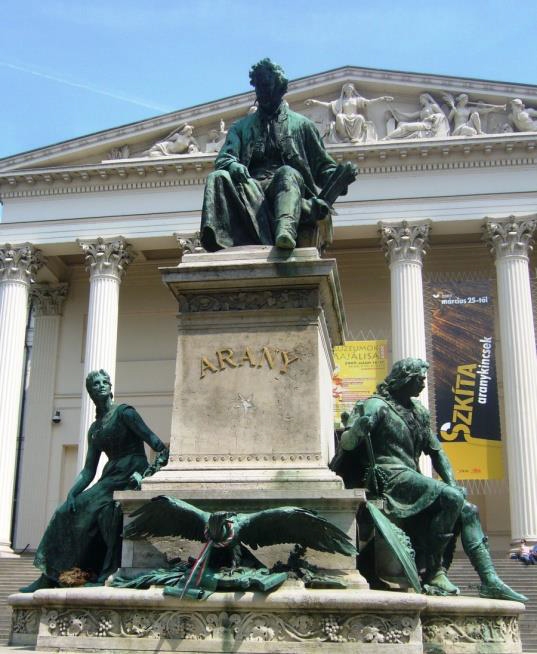
Statue of János Arany in front of the National Museum
The sculptural composition of János Arany was inaugurated in 1893 in front of the National Museum. In the work of Alajos Stróbl, Miklós Toldi and Piroska Rozgonyi can be seen next to the statue of the great poet, and a turul bird with extended wings can be seen in the lower middle
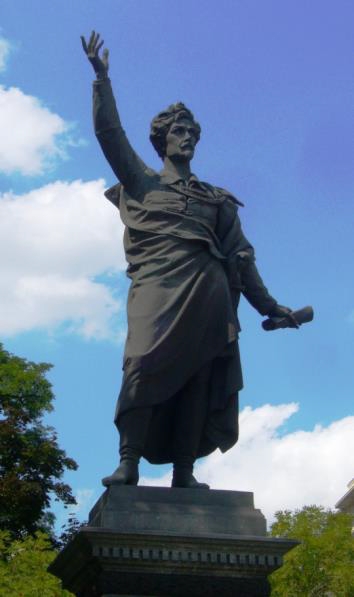
The statue of Sándor Petőfi stands in Petőfi Square in Pest. The work of Miklós Izsó was completed by sculptor Adolf Huszár after the artist's death. The statue of the great poet was placed on the pedestal designed by Miklós Ybl in 1882
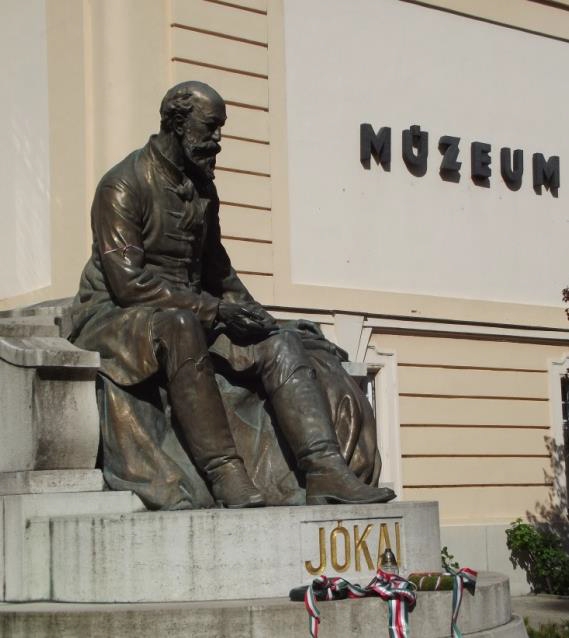
The seated statue of Mór Jókai can be seen in the hometown of the great writer, Komárom. Gyula Berecz's work was placed in front of the City Museum in 1937
In the first half of the 19th century, a number of literary and historical greats arose, a similar "phenomenon" is unparalleled in the Carpathian basin, which otherwise abounds in famous people of all ages. The outstanding event of the thousand and one hundred years of Hungarian history is the 1848/1849. revolution and war of freedom in 1980, which caused the attention of the European powers and their intervention according to their interests. We could say that this led in a "natural" way to the defeat of the victorious Hungarian freedom struggle, which, however, only succeeded with the armed and political cooperation of the European great powers. After the First World War, these great powers "thanked" Hungary for protecting Europe for centuries. We got Trianon as a thank you.
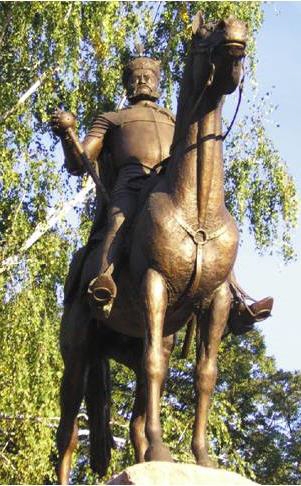
The equestrian statue of István Bocskai stands in Hajdúdorog, one of the Hajdú towns. Lajos Győrfi's work was inaugurated in October 2005, on the occasion of the 400th anniversary of the victorious Hajdú freedom struggle
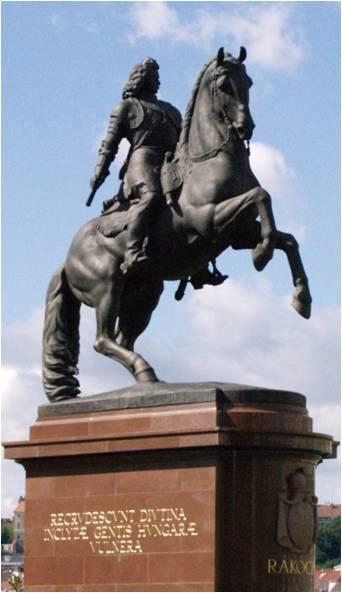
II. Ferenc Rákóczi's best-known equestrian statue stands on Kossuth Lajos Square in front of the Parliament. János Pásztor's work was completed in 1937
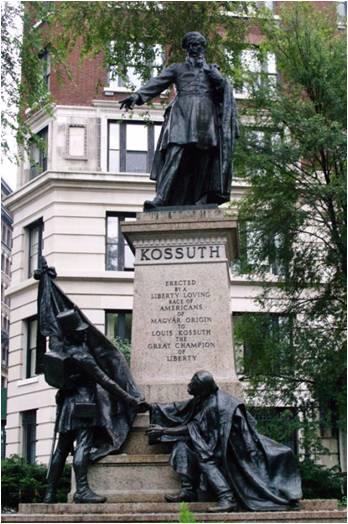
A copy of Lajos Kossuth's sculptural composition in Cegléd was also erected in New York. János Horvai's work was inaugurated on March 15, 1928 in the presence of about twenty-five thousand celebrants. On Kossuth's waist is a copy of Washington's sword, which he received during his tour of America in 1851
The devastating events of the 20th century and the worrying deterioration and deliberate destruction of European cultural and Christian values during the two decades of the 21st century have a strong impact on events in Hungary as well.
I am trying to support the idea that Hungarians have observed and still observe every point of the original European code of honor at all times and on every occasion. Despite this, armed and political attacks continue to hit our country. The question arises. Perhaps all this is happening because the states claiming to be the leaders of the continent do not comply with the laws they created themselves? Perhaps the reason for their unending restlessness is that even the grandchildren of those who attacked Trianon do not recognize the crime of unprecedented mutilation of the country? Yes, that's obvious! The problem with us is that we stick to the original agreements and do not want to adapt to the arbitrarily changed "fundamental laws".
They have been playing this game with us, the naive, gullible Hungarians who have been deceived a hundred times, for five hundred years. These are the five-minute reading materials. The first half of the 20th century was about the dismemberment of the thousand-year-old Hungary and the period of legitimate revision.
The Second World War brought further suffering and further destruction of the country to the Hungarian people. The Treaties of Paris, which ended World War II, confirmed the borders of Trianon and even tightened them. The Hungarians were the first in Europe to rise up against the unbearable Stalinist dictatorship. The fall of the 1956 revolution and freedom struggle was accompanied by the complete lack of real help, in addition to the Soviet overpowering and the clamoring of the Western powers. (It's as if we were only at Mohács, the Zríny people, then the Rákóczi freedom struggle, and to complete the list of examples, the events of the revolution and freedom struggle of 1848/1849. The West made verbal promises, but did not help, and even supported the great powers acting against the Hungarians.) In the 20th century, this state of being left alone was repeated three more times. Nevertheless, in 1989, it was again the Hungarians who broke through the structure of the Berlin Wall separating the worlds. The situation has not changed today, the target is Hungary in the first decades of the 21st century.
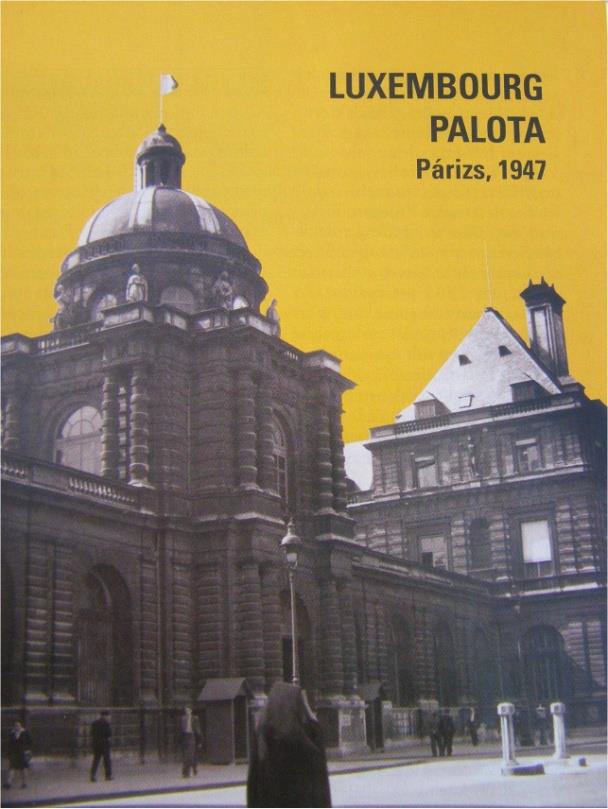
Luxembourg Palace Paris
Site of the Second Trianon. The treaty dictated by the victorious powers was signed on February 10, 1947 in Paris, at the Luxembourg Palace
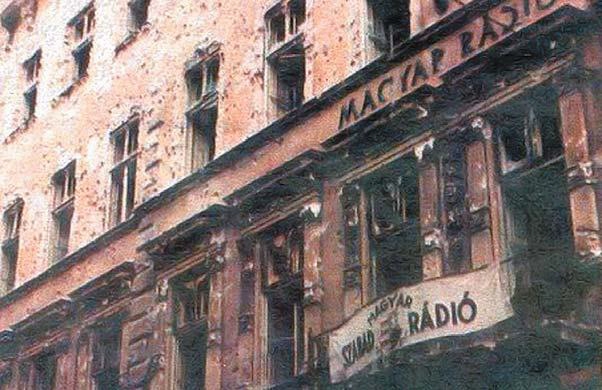
Hungarian Radio 1956
The building of the Magyar Rádió in Budapest, shot up during the revolution and freedom struggle that began on October 23, 1956

Pan-European Picnic Memorial. The sculptural composition Umbruch by Miklós Melocco was inaugurated on August 19, 2009 at Sopronkőhida, on the 20th anniversary of the famous event that took place on August 19, 1989.
Ferenc Bánhegyi
(We continue)

